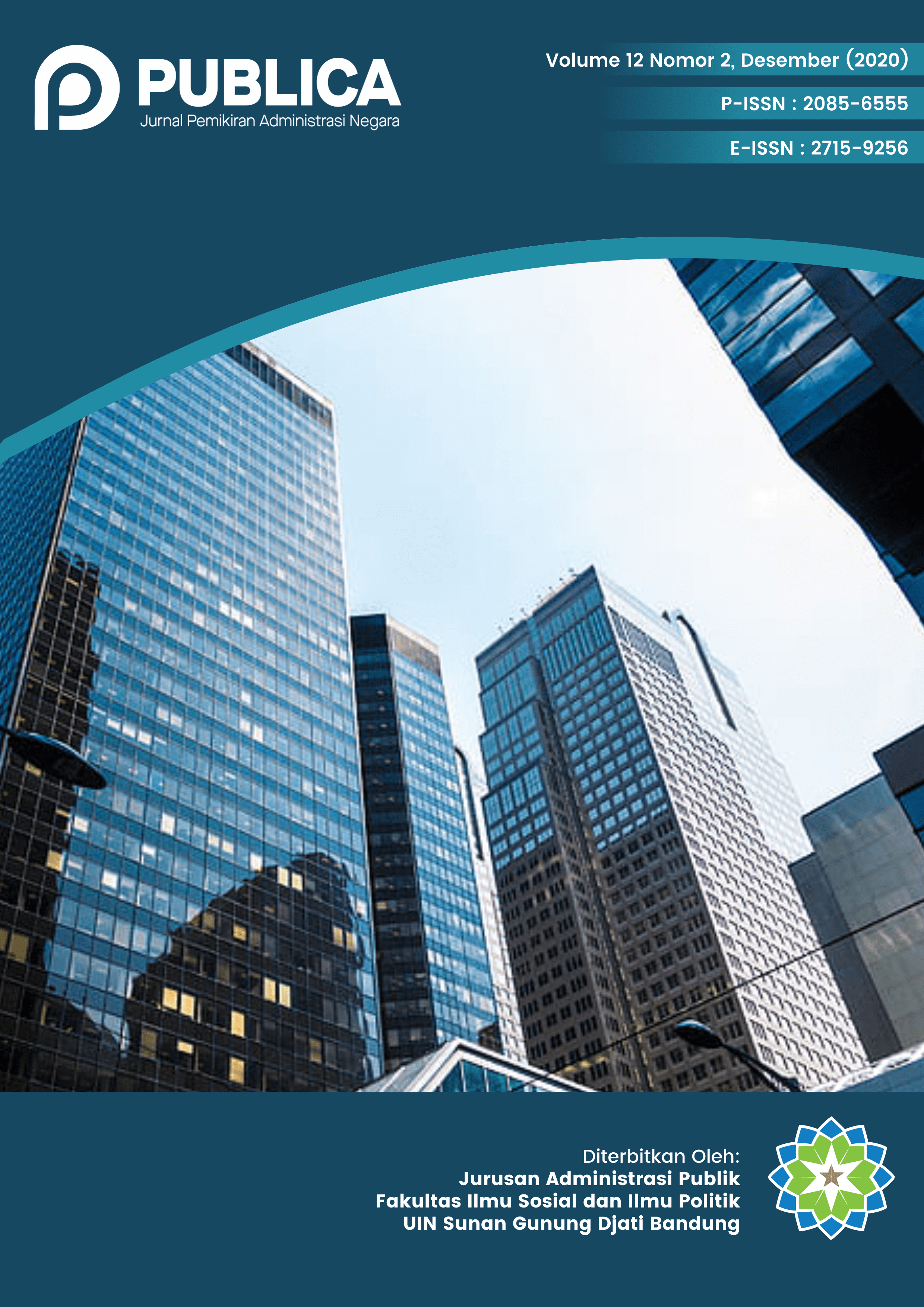Aplikasi Teknologi Informasi Dan Komunikasi Guna Meningkatkan Proses Bisnis Organisasi Publik
DOI:
https://doi.org/10.15575/jpan.v12i2.9495Keywords:
Business process, Information and Communication Technology, Public OrganizationAbstract
This paper aims to provide consideration for various local governments in Indonesia as a public organization, reflected on the success story of the Surabaya City Local Government, to incorporating information and communication technology in the structuring of the business processes of its organization. It is believed to improve the pace of decision-making and the responsiveness of public agencies to the public needs and demands. The method utilized in this paper is a systematic literature review that synthesizes and compares findings from previous research to generate new knowledge. The data used are secondary data collected from a wide range of literature which analyzed and evaluated quantitatively. The findings of this study indicate that the use of information and communication technology has a substantial effect on enhancing and improving the structuring of business processes in public organizations, i.e. (1) opening up cross-unit access of public institutions to data and information at the same time; (2) speeding up and simplifying the decision-making process; and (3) streamlining the public service delivery.References
Adam, I. O. (2020). ICT Development, E-government Development, and Economic Development: Does Institutional Quality Matter? Information Technologies & International Development, 16(1), 1-19.
Al-Kaseasbeh, H. M., Harada, Y., & Saraih, U. b. (2019). E-Government Services Assessment from the Perspective of Citizens Interaction and Satisfaction in Jordan: Pilot Study. International Journal of Research and Review, 6(12), 50-60.
Almutairi, F., Thurasamy, R., & Yeap, J. (2020). Historical Development of E-Government in the Middle East. International Journal of Recent Technology and Engineering, 8(5), 748-751. doi:10.35940/ijrte.E4912.018520
Inixindo Jogja. (2020, September 9). Promo: inixindojogja. Diambil kembali dari KPK Dorong Pemerintah Daerah Gunakan Aplikasi E-Government: https://inixindojogja.co.id/kpk-dorong-pemerintah-daerah-gunakan-aplikasi-e-government/
Manoharan, A. P., & Ingrams, A. (2018). Conceptualizing E-Government from Local Government Perspectives. State and Local Government Review, 50(1), 55-66.
Schedler, K., & Helmuth, U. (2015). Process Management in Public Sector Organization. Dalam T. Bovaird, & E. Loeffler, Public Management and Governance 3eds (hal. 322-343). New York: Routledge.
Snyder, H. (2019). Literature review as a research methodology: An overview and guidelines. Journal of Business Research, 104, 333-339.
Sung-Bou, K., & Dongwook, K. (2020). ICT Implementation and Its Effect on Public Organizations: The Case of Digital Customs and Risk Management in Korea. Sustainability, 12(8), 1-19. doi:10.3390/su12083421
Twizeyimana, J. D., & Andersson, A. (2019). The public value of E-Government – A literature review. Government Information Quarterly, 36(1), 167–178.
Downloads
Published
Issue
Section
License
Authors who publish with this journal agree to the following terms:
- Authors retain copyright and grant the journal right of first publication with the work simultaneously licensed under an Attribution-ShareAlike 4.0 International that allows others to share the work with an acknowledgment of the work's authorship and initial publication in this journal.
- Authors are able to enter into separate, additional contractual arrangements for the non-exclusive distribution of the journal's published version of the work (e.g., post it to an institutional repository or publish it in a book), with an acknowledgment of its initial publication in this journal.
- Authors are permitted and encouraged to post their work online (e.g., in institutional repositories or on their website) prior to and during the submission process, as it can lead to productive exchanges, as well as earlier and greater citation of published work (See The Effect of Open Access).
